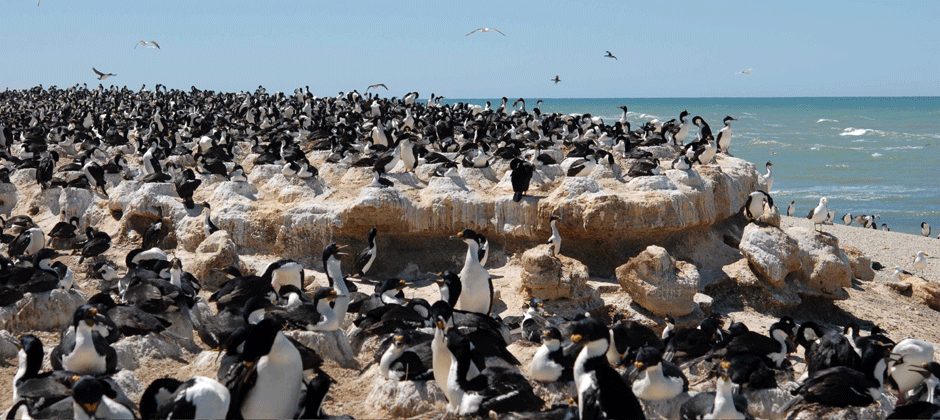Conserving the large colonies of marine mammals and coastal birds along with their habitats
Stretching approximately 6,800 km from Buenos Aires to Tierra del Fuego, Argentina's coastline is home to unique natural spectacles, with large concentrations of birds and marine mammals gathering to breed and rest on its beaches. Colonies of Magellanic penguins, cormorants, terns, gulls, large colonies of sea lions and elephant seals are some of the many species that embellish the Argentine coastal landscape. And in Valdés peninsula, more than a third of the southern right whale population takes refuge to reproduce and feed their newborn calves before beginning their migration to pelagic feeding areas.
Challenges
Argentina's coastal species and ecosystems can be affected by certain human activities. Urban pollution, plastic from fishing, treated water discharge, or pollution associated with hydrocarbon activities; the introduction of exotic species; human disturbance in sensitive areas; the development of oil cargo terminals in coastal areas that are key to biodiversity, among others, are serious threats to the future of Argentina's exceptional and diverse coastal corridor. Climate change and epidemics are global threats that intensify the effect of these dangers.

Our work
We seek to preserve healthy populations of seabirds and marine mammals that concentrate on the Argentine coast in perpetuity, as they are a key component of the ecological structure and integrity of our coastal and marine ecosystems. We work with local communities to strengthen the use of practices that are friendly to nature and its biological diversity, such as the development of non-lethal fishing practices that allow for the recovery of the conservation status of large threatened sharks. We support scientific projects led by Argentine researchers from top-level national research centers, which generate key knowledge to guide our conservation strategies. We work with governments, local communities, and other civil society organizations, collaborating in the management and care of coastal and marine wildlife and promoting the creation and effective implementation of protected areas. We promote and facilitate participatory processes, where science and multidisciplinary expert knowledge are put at the service of strategies for decision-making associated with public policies that define the future of our coastal ecosystems and their biodiversity.
Accomplishments
Since the 1960s, we have participated in the creation of more than 15 coastal protected areas in the country, totaling approximately 9,800 km2 of coastal land areas and 15,000 km2 of coastal marine areas within the territorial sea. Together with local partners and agencies, we lead and facilitate the development and implementation of the Integrated Management Plan for the Patagonian Coastal Zone, funded by the Global Environment Facility (GEF) and the United Nations Development Programme (UNDP). Our work contributed to improving the practices used by oil tankers and modifying their shipping routes to reduce marine oil pollution, which in the past caused massive and chronic seabird mortality. We were leaders in the study and conservation of the southern right whale, working with key local leaders to protect its first breeding refuge in 1974, the Golfo San José Provincial Marine Park. We created programs and supported research projects for the management and conservation of key species such as elephant seals, penguins, cormorants, and whales. Currently, a network of more than 200 sport and recreational fishermen have transformed their practices and become allies in the conservation of large endangered sharks, tagging more than 3,000 for study and then releasing them alive back into the sea.